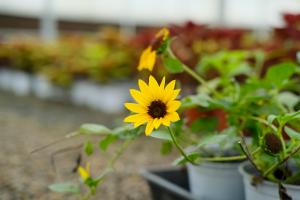A Plant That Has Water Inside in Arizona
Arizona is known for its arid climate and dry desert landscapes. It's not exactly the ideal place for vegetation to thrive, but there's one plant that manages to survive and thrive in this unforgiving terrain – the Agave plant.
The Agave Plant
The Agave plant is known for its fleshy leaves that store water inside. These leaves are long and thick, and they come together to form a rosette-shaped plant that can grow up to six feet tall and wide. This succulent plant is native to the Americas, and it has a long history of use by indigenous peoples for both food and medicine.
There are many different types of Agave plants, but the most common one found in Arizona is the Agave americana. This plant is also known as the century plant because it's said to bloom only once every hundred years, although this is a myth.
An Essential Plant for Arizona's Environment
The Agave plant is an essential part of Arizona's ecosystem. It provides food and shelter for a variety of wildlife, including birds, rodents, and insects. When the plant blooms, it produces a tall spike of yellow flowers that is attractive to bees and other pollinators.
But perhaps the most important benefit of the Agave plant is its ability to conserve water. Its fleshy leaves store large amounts of water, allowing the plant to survive in a region where water is scarce. This makes it an excellent plant for landscaping in arid climates, as it requires little watering and maintenance.
Traditional Uses of the Agave Plant
The Agave plant has been used by indigenous peoples of the Americas for thousands of years. It was an important source of food, providing a nutritious and energy-rich sap that could be consumed raw or fermented into alcoholic beverages.
In addition to its culinary uses, the Agave plant was also used for medicinal purposes. The sap was believed to have healing properties and was used to treat a variety of ailments, including wounds, fevers, and gastrointestinal problems.
Modern Uses of the Agave Plant
Today, the Agave plant is perhaps most well-known for its use in the production of tequila. Tequila is made from the sap of the Blue Agave plant, which is grown primarily in Mexico. The sap is extracted from the cooked and mashed hearts of the plant, which are then fermented and distilled into tequila.
But tequila is not the only product that can be made from the Agave plant. Its fibrous leaves can be used to make textiles, including ropes and woven mats. The sap can also be boiled down into a sweet syrup that can be used as a natural sweetener in food and drinks.
In Conclusion
The Agave plant is a remarkable plant that thrives in the arid landscapes of Arizona. Its ability to store water makes it an essential plant for the region's ecosystem, and its versatility has made it a valuable resource for thousands of years. Whether used for food, medicine, or industry, the Agave plant is a plant that has truly stood the test of time.

 how many times do yo...
how many times do yo... how many planted tre...
how many planted tre... how many pine trees ...
how many pine trees ... how many pecan trees...
how many pecan trees... how many plants comp...
how many plants comp... how many plants can ...
how many plants can ... how many plants and ...
how many plants and ... how many pepper plan...
how many pepper plan...































